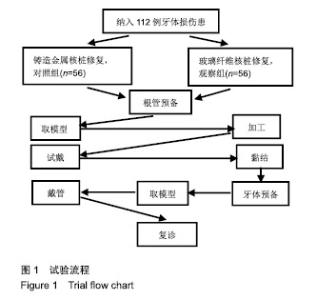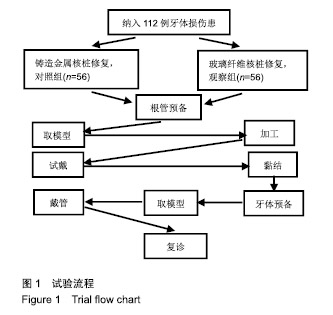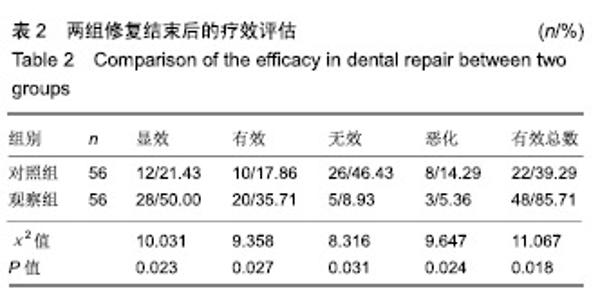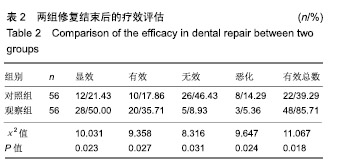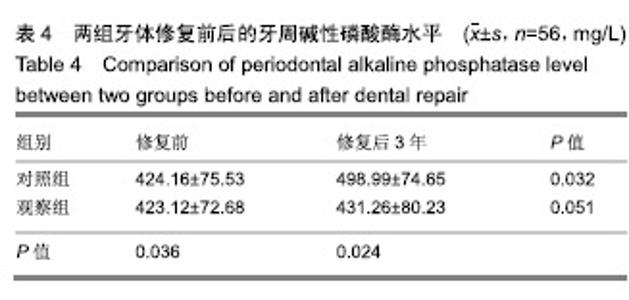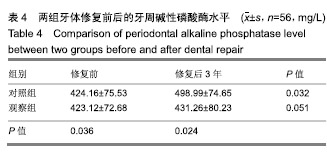| [1]魏丽君,曹均凯,赵迪.玻璃纤维桩与铸造金属桩在老年患者前牙修复中的临床效果观察[J].中华老年多器官疾病杂志, 2016,15(4): 270-273.[2]黄会杰,钱江松,方燕红,等.玻璃纤维桩与金属桩在口腔残根修复中的效果比较[J].广东医学,2017, 38(4):592-593.[3]郭瑞生.玻璃纤维桩核修复57例磨牙大面积牙体缺损的临床疗效观察[J].泰山医学院学报,2016,37(4):407-409.[4]谭忠荣,陈丽,谢三祥,等.牙体大面积缺损修复中玻璃纤维桩与双固化桩核材料联合制作桩核的应用[J]. 基因组学与应用生物学, 2016,35(9):2280-2285.[5]Mohammad J,Jayachandran M,Rethi M,et al.Effectiveness of Platelet Rich Plasma and Bone Graft in the Treatment of Intrabony Defects: A Clinico-radiographic Study.Open Dent J. 2018;12(1):133-154.[6]Wen Y,Zhang Z,Zhang Y,et al.Redundancy Analysis of Capacitance Data of a Coplanar Electrode Array for Fast and Stable Imaging Processing.Sensors.2018;18(1):31.[7]Tang T,Wu L,Gao S,et al.Universal Effectiveness of Inducing Magnetic Moments in Graphene by Amino-Type sp3-Defects. Materials.2018;11(4):616.[8]Clara C,Michele B,Giulio C, et al. Neural Restoration Training improves visual functions and expands visual field of patients with homonymous visual field defects.Restor Neurol Neurosci. 2018; 36(2):275-291.[9]刘红.纤维桩与金属桩核在修复大面积牙体缺损中的临床效果观察[J].中国医药指南,2018,16(11):9-11.[10]向华居.玻璃纤维桩与金属桩核修复牙体缺损的比较[J].中国保健营养,2016,5(2):112-112.[11]Frank RM,Cotter EJ,Strauss EJ,et al.The Utility of Biologics, Osteotomy, and Cartilage Restoration in the Knee.J Am Acad Orthop Surg 2018;26(1):e11-e25.[12]淳丽娜.玻璃纤维桩核与铸造金属桩核修复磨牙牙体缺损的对比研究[J].现代实用医学,2016,28(1):101-103.[13]Pierre L,Cameron B,Padraig E,et al.Treatment of calvarial defects by resorbable and non-resorbable sonic activated polymer pins and mouldable titanium mesh in two dogs: a case report.BMC Vet Res. 2018;14(1):199-204.[14]孔德让.玻璃纤维桩和铸造金属桩修复牙体缺损的效果对比[J].中国组织工程研究,2015,19(16):2540-2544.[15]Tao T,Liting W,Shengqing G,et al. Universal Effectiveness of Inducing Magnetic Moments in Graphene by Amino-Type sp3-Defects.Materials.2018;11(4):616-620.[16]苏比力•吐尔逊江,麦合甫孜•艾山,迪丽努尔•阿吉,等.不同牙体剩余量及根尖封闭量对铸造桩修复后牙根抗力及断裂部位的影响[J].陕西医学杂志,2017,15(6):144-147.[17]丁钰,张莹,付建军,等.不同修复方式对儿童乳牙牙体缺损的疗效和安全性比较[J].现代生物医学进展, 2017,36(26):144-147.[18]纪建新.根管疗法联合聚合瓷嵌体修复治疗后牙体缺损62例疗效观察[J].陕西医学杂志,2017, 46(9):1262-1263.[19]肖燕,沈凯奇,郭嘉,等.纤维桩修复不同形态上颌尖牙根管的动力学与疲劳分析[J].口腔医学研究,2017, 33(8):860-864.[20]Torres-Sánchez C,Montoya-Salazar V,Córdoba P. Fractureresistance of endodontically treated teeth restored with glass fiberreinforced posts and cast gold post and cores cemented with threecements.J Prosthet Dent. 2013;110(2): 127-133.[21]徐波,白真玉.玻璃纤维桩核与铸造金属桩核修复残根残冠及无桩修复根管的临床疗效对比[J].浙江创伤外科, 2017,22(6):1164-1165.[22]Rippe MP,Santini MF,Bier CA,et al.Effect of root canal preparation, type of endodontic post and mechanical cycling on root fracture strength.J Appl Oral Sci.2014;22(3):165-173.[23]陈衍亮.金属桩与玻璃纤维桩对老年上颌前牙残根残冠修复的临床疗效比较[J].中国冶金工业医学杂志, 2018,35(3):43-45.[24]印奇志.纤维桩核冠和铸造金属桩核冠在后牙牙体大面积缺损修复中的应用[J].安徽医药,2017, 21(1):91-93.[25]洪席超,李懿,文静.3种纤维桩修复前牙抗折力的研究[J].实用医学杂志,2018,34(9):90-92,108.[26]李树朝.玻璃纤维桩树脂核和金属铸造桩核在上颌前牙残根残冠修复中的临床疗效对比[J].现代口腔医学杂志,2017,31(3):180-182.[27]刘林,甘抗,王艺婷,等.两种桩核系统修复剩余不同数目侧壁残冠的抗折性研究[J].口腔颌面修复学杂志, 2018,19(2):65-69.[28]周江保.纤维桩和个性化氧化锆桩在上颌前牙修复的临床对照研究[J].临床口腔医学杂志,2018,34(7):423-424.[29]王程.玻璃纤维桩与金属桩核修复牙体缺损的比较[J].全科口腔医学电子杂志,2016,3(6):36-37.[30]Chiang CW, Wang Y, Sun P, et al. Quantifying white matter tract diffusion parameters in the presence of increased extra-fiber cellularity and vasogenic edema. NeuroImage. 2014;101(25): 310-319.[31]赵延嗣.玻璃纤维桩与铸造金属桩在牙体缺损修复中的应用效果分析[J].首都食品与医药,2018,25(1):11-12.[32]郭会平.两种桩核冠修复体治疗牙体缺损的临床效果观察[J].中国医疗美容,2017,7(1):50-52.[33]王慧云.玻璃纤维桩与金属桩核修复牙体缺损的效果比较[J].世界最新医学信息文摘,2017,17(57):49-57.[34]Missig G,Mei L,Vizzard MA, et al. Parabrachial Pituitary Adenylate Cyclase-Activating Polypeptide Activation of Amygdala Endosomal Extracellular Signal-Regulated Kinase Signaling Regulates the Emotional Component of Pain.Biol Psychiatry. 2017;81(8):671-682. [35]杨芬.前牙牙体修复中使用玻璃纤维桩和铸造金属桩的效果对比[J].临床医学工程,2017,24(3):367-368. |
